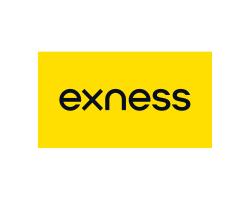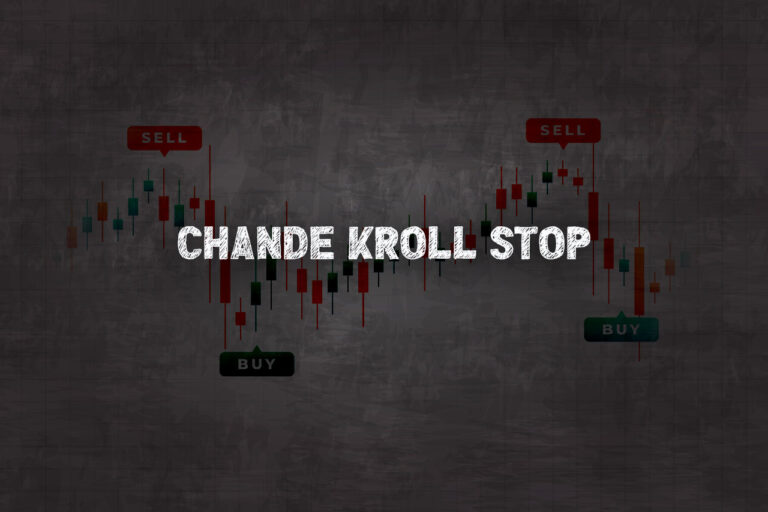1. What Is the Supertrend Indicator?
The Supertrend Indicator is a popular technical analysis tool used by traders to determine market trends and potential reversal points. Based on average true range (ATR) and price data, the indicator overlays a line on the price chart that dynamically adjusts with price movements. When the price is above this line, the Supertrend is considered bullish, and it turns bearish when the price falls below the line.
This indicator is particularly favored for its simplicity and effectiveness, providing clear buy and sell signals based on its color-coded system. Typically, the line is green when the trend is upward, and turns red during a downtrend, serving as a visual cue for traders to assess the market’s direction swiftly.
The Supertrend Indicator excels in trending markets, where it can help traders ride the trend for maximum profit. However, in sideways or choppy markets, its performance may be less reliable, leading to potential false signals. Despite this, its ease of use and interpretability make it a staple in many traders’ toolkits, as it helps cut through the noise and focus on the prevailing trend.

2. How to Set Up the Supertrend Indicator?
Setting up the Supertrend Indicator on your trading platform is a straightforward process. First, access the list of technical indicators provided by your trading software and select the Supertrend from the available options. Once selected, the default parameters for the indicator will appear, typically including the Average True Range (ATR) period and the multiplier.
The ATR period determines the number of bars used to calculate the Average True Range, with a common default setting being 14 periods. The multiplier affects the sensitivity of the indicator; a higher multiplier increases the distance between the Supertrend line and price action, potentially reducing the number of signals and vice versa. A standard multiplier value is around 3.0.
After configuring these parameters, the Supertrend line will be overlaid on your price chart. It’s crucial to test different settings to match your trading style and the asset’s volatility. Some traders prefer a shorter ATR period for more responsive signals, while others opt for a longer period for smoother trend indications.
For additional customization, traders may adjust the color settings to enhance visibility. The default is usually a green line for bullish trends and a red line for bearish trends, but these can be changed to suit your preferences or to accommodate color vision deficiencies.
Backtesting the Supertrend Indicator with historical data is recommended before applying it to live trades. This practice allows you to refine the settings and gain confidence in the signals generated by the indicator. Remember, no single setting fits all markets; adaptability is key to leveraging the Supertrend Indicator effectively.
2.1. Choosing the Right Charting Platform
Compatibility with Technical Indicators
When selecting a charting platform, compatibility with technical indicators such as the Supertrend is essential. The platform must allow for customization of ATR settings and multiplier values to tailor the indicator to various trading strategies and market conditions. Platforms that offer a wide range of indicators and customization options grant traders the flexibility needed to adapt their tools to their trading style.
Real-Time Data and Execution Speed
Traders should seek platforms that provide real-time data and fast execution speeds to ensure that the Supertrend Indicator reflects current market conditions accurately. A delay in data or a lag in execution can lead to missed opportunities or entering positions at suboptimal prices.
User Interface and Accessibility
The user interface should be intuitive, allowing for easy navigation and quick adjustments to indicator settings. Traders who rely on color-coded signals must ensure the platform offers accessible color customization to accommodate their needs. A cluttered or confusing interface can hinder a trader’s ability to make timely decisions.
Backtesting Capabilities
A charting platform that features robust backtesting tools enables traders to evaluate the effectiveness of the Supertrend Indicator with historical data. This functionality is critical for optimizing settings and validating strategies before risking real capital.
Integration with Trading Software
Finally, consider the platform’s ability to integrate with existing trading software. Seamless integration allows for efficient workflow and the ability to execute trades directly from the chart, enhancing the overall trading experience.
2.2. Adjusting Indicator Parameters
Adjusting Indicator Parameters
Customizing the Supertrend Indicator parameters is essential to align with individual trading strategies and market conditions. The two primary parameters that traders adjust are the Multiplier and the Period.
The Multiplier affects the sensitivity of the indicator. A higher multiplier increases the distance between the price and the Supertrend line, which can reduce the frequency of trading signals and potentially lead to fewer false signals. Conversely, a lower multiplier brings the Supertrend line closer to the price, increasing sensitivity and the number of signals, which could be beneficial in a trending market.
Adjusting the Period parameter impacts how the Supertrend calculates the average true range. A longer period smooths out the volatility and provides a more stable trend line. This can be advantageous during periods of significant price fluctuations, as it may filter out noise. A shorter period makes the Supertrend react faster to price changes, which might be preferable in fast-moving markets or for short-term trading.
Traders should test different combinations of these parameters through backtesting to determine the optimal settings for their trading style and the assets they trade. It’s important to remember that there is no one-size-fits-all setting; market conditions and volatility levels often dictate the most effective parameter adjustments.

2.3. Integrating with Other Technical Tools
Integrating Supertrend with Moving Averages
Moving Averages (MAs) serve as a foundational tool for trend identification. When combined with the Supertrend indicator, they can validate trend direction and strength. For instance, a simple moving average (SMA) or an exponential moving average (EMA) can be applied to the same chart as the Supertrend. A confirmation signal is considered stronger when the price is above both the Supertrend line and a long-term MA, indicating a potential buy signal. Conversely, a sell signal is reinforced when the price is below both the Supertrend and the MA.
Utilizing Supertrend with Oscillators
Integrating oscillators such as the Relative Strength Index (RSI) or the Stochastic Oscillator can help identify overbought or oversold conditions. When the Supertrend indicates a trend, the oscillator’s readings can suggest whether it is time to enter or exit a trade. For example, in an uptrend signaled by the Supertrend, an RSI reading below 30 could indicate an impending reversal or a temporary pullback, presenting a buying opportunity.

Combining Supertrend with Volume Indicators
Volume indicators, like the On-Balance Volume (OBV) or Volume-Weighted Average Price (VWAP), complement the Supertrend by confirming the strength of the trend with volume data. An increasing OBV along with a bullish Supertrend suggests a strong upward momentum backed by volume. Similarly, if the VWAP is below the price during an uptrend indicated by the Supertrend, it may validate the presence of buying pressure.
Enhancing Supertrend with Chart Patterns
Incorporating chart patterns such as triangles, head and shoulders, or flags can offer additional insights into potential breakouts or reversals. When these patterns align with the Supertrend’s signals, it can increase the probability of the anticipated price movement. For instance, a breakout from a triangle pattern in the direction of the Supertrend’s signal can be a robust entry point.
By integrating the Supertrend with other technical tools, traders can create a more comprehensive and robust trading strategy. Each tool adds a layer of confirmation, reducing the likelihood of false signals and increasing the potential for successful trades. However, traders must ensure that they do not overcomplicate their charts, as too many indicators can lead to analysis paralysis.
3. How to Use the Supertrend Indicator for Trade Signals?
The Supertrend Indicator serves as a dynamic support and resistance level that is directly plotted on the price chart. Buy signals are typically generated when the price closes above the Supertrend line, which changes color to indicate a potential uptrend. Conversely, sell signals are suggested when the price closes below the Supertrend line, often resulting in the line changing color to signal a possible downtrend.
Traders can enhance their entry and exit strategies by using the crossover of the price and the Supertrend line. For instance, entering a long position when the price crosses above the Supertrend line and exiting or taking a short position when the price crosses below provides a clear, actionable signal.
Stop-loss orders are effectively placed just below the Supertrend line for long positions, or above it for short positions to manage risk. This method allows traders to stay in the trade as long as the trend remains in their favor, while also providing a predefined exit point if the trend reverses.
To avoid false signals, traders often wait for additional confirmation, such as a candle closing above or below the Supertrend line. This patience helps to filter out market noise and improve the accuracy of the trade signals. Combining the Supertrend with volume analysis can further validate the strength of the signals, with higher volume on trend-following candles indicating stronger conviction among market participants.
Timeframe selection also plays a crucial role in the effectiveness of Supertrend signals. Shorter timeframes may offer more signals, but with increased market noise, while longer timeframes provide fewer, but typically more reliable, signals. Traders should select a timeframe that aligns with their trading style and risk tolerance.
3.1. Identifying Trend Directions
Utilizing Moving Averages for Trend Direction
In the realm of trend direction identification, moving averages (MAs) are pivotal. By overlaying a simple or exponential moving average on the price chart, traders can discern the general trend direction at a glance. A price consistently above the MA suggests an uptrend, while below indicates a downtrend. The slope of the MA also provides insight; an upward slope signals bullish momentum, and a downward slope indicates bearish momentum.
Multiple moving averages can be employed for a more nuanced analysis. For instance, using a short-term MA alongside a long-term MA can pinpoint trend changes more precisely. A bullish crossover, where the short-term MA crosses above the long-term MA, signals a potential uptrend. Conversely, a bearish crossover implies a possible downtrend.
Enhancing Trend Identification with Price Action
Price action analysis enhances trend direction identification without relying solely on indicators. Higher highs and higher lows typically confirm an uptrend, while lower highs and lower lows validate a downtrend. Traders observe these patterns to gauge the strength and sustainability of a trend.
Support and resistance levels also offer valuable clues. A price breaking through resistance may signal the continuation of an uptrend, whereas a fall below support could indicate a strengthening downtrend. These levels act as barriers that, once breached, can lead to significant price movements in the direction of the break.
Applying the ADX Indicator
The Average Directional Index (ADX) is a technical tool specifically designed to measure trend strength. Readings above 25 generally suggest a strong trend, while below 20 indicate a weak or non-trending market. The ADX does not provide directional bias but, when combined with directional indicators like the positive directional indicator (+DI) and negative directional indicator (-DI), it becomes a powerful tool for assessing trend directions. A rising +DI above -DI suggests an uptrend, while the opposite holds true for downtrends.
3.2. Timing Entry and Exit Points
Identifying Optimal Trade Execution
Candlestick patterns and price action are critical in timing entry and exit points. For example, a bullish engulfing pattern at a key support level may offer a strong entry signal for a long position. Conversely, a bearish engulfing pattern at resistance can be a clear exit or short-sell signal. Traders often wait for these patterns to confirm before executing trades, reducing the likelihood of false breakouts.
Moving averages serve as dynamic support and resistance levels, providing entry or exit signals as prices interact with them. A price crossing above a moving average may indicate a buying opportunity, while a cross below could suggest an exit or short position. The 50-day and 200-day moving averages are particularly watched for the ‘golden cross’ and ‘death cross’ signals, respectively indicative of potential bullish or bearish market sentiment shifts.
Volume plays a pivotal role in confirming the strength of a price move. An entry point is considered more reliable when accompanied by high volume, as it suggests a consensus among traders about the price direction. Exit points should similarly be scrutinized; a drop in volume at a new high may signal waning momentum and a potential reversal.
Oscillators such as the Relative Strength Index (RSI) and Stochastic can indicate overbought or oversold conditions. An RSI reading above 70 suggests an asset may be overbought and approaching a potential sell-off, while a reading below 30 indicates an oversold condition and a potential upward reversal. Traders use these overbought and oversold signals to time their exits and entries, looking for divergence between price and oscillator for additional confirmation.
Utilizing stop-loss orders and take-profit levels helps traders manage risk and lock in profits. A stop-loss is set below the current price for a long position or above for a short position, to limit potential losses. Take-profit orders are placed at levels where the trader anticipates the price may reverse after achieving a certain profit. These tools automate trade exits, ensuring discipline and adherence to strategy.
3.3. Managing Risk with Supertrend
Managing Risk with Supertrend
The Supertrend indicator is a dynamic tool that traders harness to gauge market trends and set risk parameters. It combines average true range (ATR) and median price data to establish a stop-loss level that adapts to price volatility. When the price is above the Supertrend line, the market is considered to be in an uptrend, and the line acts as a dynamic support level. Conversely, if the price falls below the Supertrend line, it indicates a downtrend, turning the line into a dynamic resistance level.
Traders often set their stop-loss orders just below the Supertrend line for long positions or above it for short positions. This method enables a responsive approach to stop placement, which can protect against market reversals while allowing room for normal price fluctuations. The responsive nature of the Supertrend line helps to avoid premature exits from positions, ensuring traders remain in the trade during trending periods.
Position sizing can be optimized using the Supertrend indicator by calculating the distance between the entry point and the Supertrend line. This distance can inform traders on the amount of capital to risk on a trade, maintaining a consistent risk profile across different trading setups.
In addition to stop-loss orders, traders might employ trailing stops with the Supertrend indicator. As the price moves favorably, the trailing stop can be adjusted to follow the Supertrend line, securing profits while still providing a buffer against sudden price reversals.
The Supertrend indicator’s utility is not limited to risk management; it can also serve as a signal for trade entries and exits. A change in the direction of the Supertrend line can suggest a potential entry or exit point, complementing other technical analysis tools and confirming trends. However, it is crucial for traders to consider additional technical, fundamental, or sentiment analysis before making trade decisions based solely on the Supertrend indicator.
4. What Are the Best Strategies for Using the Supertrend Indicator?
Combining Supertrend with Other Indicators
The Supertrend indicator works best when combined with other technical analysis tools. For instance, using it alongside moving averages can help confirm trends. A strategy might involve entering a trade when the Supertrend signals an uptrend and the price is above a significant moving average, such as the 50-day or 200-day MA. Conversely, a sell signal could be strengthened if the price falls below a key moving average while the Supertrend turns bearish.
Volume Analysis for Entry and Exit Confirmation
Volume is another critical factor that can be used in conjunction with the Supertrend indicator. An increase in volume on the candle that corresponds with a change in the Supertrend line provides additional confirmation of the signal’s strength. Traders may opt to enter or exit a position when they observe high volume coinciding with a Supertrend reversal.
Time Frame Analysis for Enhanced Accuracy
Utilizing multiple time frames can enhance the accuracy of the Supertrend indicator. Traders may use a longer time frame to determine the overall trend and a shorter time frame to pinpoint entry and exit points. For instance, a trader might use a daily chart to gauge the general market direction and a 1-hour chart to execute trades in line with the broader trend.
Supertrend in Trending and Ranging Markets
The Supertrend indicator’s effectiveness varies between trending and ranging markets. In a strong trend, the indicator can be used to maintain positions until the trend weakens or reverses. In contrast, during range-bound markets, the Supertrend may produce false signals; hence, traders should be cautious and possibly reduce position sizes or abstain from trading until a clearer trend emerges.
Risk Management with Supertrend
Risk management is a critical aspect of using the Supertrend indicator effectively. Traders should always set stop-loss orders based on the Supertrend line to minimize potential losses. Moreover, employing a risk-to-reward ratio of at least 1:2 can help ensure that profits are maximized relative to the risks taken on each trade.
4.1. Combining with Moving Averages
Combining supertrends with Moving Averages
When integrating Moving Averages (MAs) with the Supertrend indicator, traders can refine entry and exit strategies to better capture market trends. Simple Moving Averages (SMAs) or Exponential Moving Averages (EMAs) can serve as additional layers of confirmation. For example, a trader might wait for the price to be above a certain MA, such as the 50-period EMA, to confirm an uptrend before taking a long position signaled by the Supertrend.
In multi-timeframe analysis, a longer-term MA on a higher timeframe can establish the predominant trend, while the Supertrend on a lower timeframe can provide precise entry points. This dual approach can filter out noise and increase the probability of executing successful trades. Confluence between the Supertrend indicator and a MA can act as a strong signal, suggesting that the market sentiment aligns across different time perspectives.
Crossovers between the price and a MA can also be employed in conjunction with the Supertrend. When the price crosses above a MA and the Supertrend flips to green, it may indicate a robust buy signal. Conversely, a sell signal might be confirmed when the price falls below a MA while the Supertrend turns red.
It’s important to note that the length of the MA should be chosen based on the trader’s style and the asset’s volatility. A shorter MA might be used for a more aggressive strategy, while a longer MA could suit a conservative approach. Adjusting the sensitivity of the Supertrend to align with the chosen MA can further harmonize the indicators, reducing the likelihood of conflicting signals.
Using MAs with the Supertrend requires backtesting to determine the optimal settings and to understand the dynamics between the indicators under various market conditions. This preparation ensures that the combined strategy aligns with the trader’s risk tolerance and trading objectives.
4.2. Applying to Different Timeframes
Applying to Different Timeframes
The effectiveness of combining the Supertrend indicator with moving averages (MAs) can vary significantly across different timeframes. Intraday traders often prefer shorter timeframes such as 1-minute to 15-minute charts. Here, a shorter MA like the 5-period or 10-period can be more responsive to price movements, providing quicker signals in tandem with the Supertrend. However, this setup can also lead to more false signals due to market noise.
Swing traders, on the other hand, might opt for hourly to daily charts. These traders could benefit from a longer MA, such as the 50-period or 200-period, to filter out insignificant price fluctuations and focus on more significant trends. Aligning the Supertrend’s sensitivity with a longer MA on these timeframes can result in more reliable signals, albeit with a slower response to market changes.
Position traders who hold trades for weeks or months may find value in using weekly or monthly charts. The use of an even longer MA is common in this scenario, potentially the 100-period or 200-period MA, to capture the overarching market trend. The Supertrend’s settings should be adjusted to ensure that it reflects the long-term momentum and provides signals that resonate with the extended timeframe.
Regardless of the chosen timeframe, traders should adjust the parameters of both the Supertrend and MA to fit the specific characteristics of the market and the asset being traded. Backtesting remains a crucial step to validate the effectiveness of the chosen settings for the Supertrend and MA combination across different timeframes, ensuring that the strategy is robust and can withstand various market conditions.
4.3. Supertrend in Volatile vs. Trending Markets
Supertrend in Volatile Markets
In volatile markets, the Supertrend indicator can often produce whipsaws, leading to false signals and potential losses if not calibrated correctly. To mitigate this, traders might increase the ATR multiplier. A higher multiplier provides a wider channel and reduces the sensitivity of the indicator to market noise. This adjustment helps to filter out insignificant price movements, allowing traders to focus on substantial trend shifts. However, this comes at the cost of a delayed entry, which might reduce potential gains.
Trending markets, on the other hand, are where the Supertrend shines. With a strong directional movement, the indicator can help traders capitalize on the full extent of the trend. In such conditions, a lower ATR multiplier is often more effective as it allows for an earlier entry, enabling traders to maximize profits from the developing trend. The key is to ensure the ATR multiplier is not so low that it reverts back to generating false signals during minor pullbacks within the trend.
Combining the Supertrend with a moving average (MA) can further enhance its performance in both volatile and trending markets. In trending markets, a shorter MA can be used to confirm the signals generated by the Supertrend, providing additional validation for trend continuations. Conversely, in volatile markets, a longer MA can serve as a filter to avoid entering trades during short-lived price spikes that do not represent a true trend change.
Traders should always be aware of the current market context when applying the Supertrend indicator. Recognizing whether the market is trending or experiencing volatility is essential for setting the appropriate parameters. Continuous monitoring and adjustment of the Supertrend settings are vital to align with the prevailing market conditions. This proactive approach can significantly enhance the effectiveness of the Supertrend indicator, regardless of market behavior.












